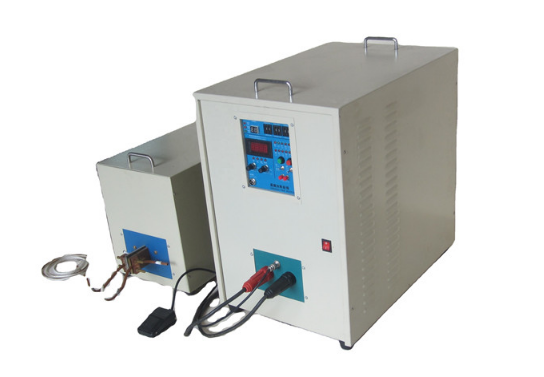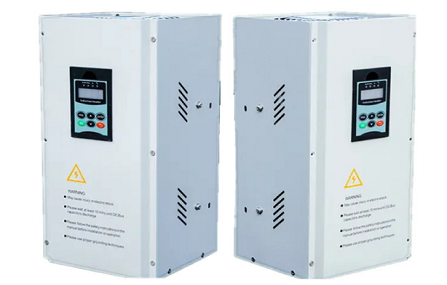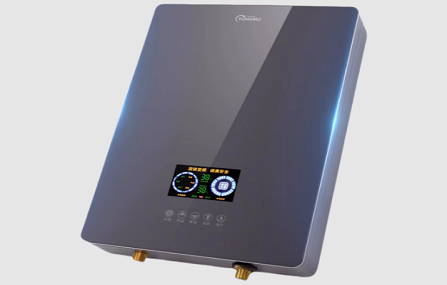Induction hardening is gaining popularity in the manufacturing industry due to its ability to provide precise and controlled hardening, which improves various physical, mechanical, and chemical properties of a workpiece.
Understanding the advantages and disadvantages of induction hardening is crucial for achieving optimal results while minimizing potential defects and failures. This article will explore these aspects in detail.
How Does Induction Hardening Affect Physical & Mechanical Properties?
During induction hardening, the workpiece is heated to a high temperature, triggering an austenite transformation. At the microstructural level, carbon atoms become trapped within the crystal structure, leading to strengthened grain boundaries. This transformation increases the material's hardness, while the tighter grain boundaries enhance its mechanical strength.
To highlight the benefits of induction hardening, we’ll also compare it to other hardening techniques to demonstrate why induction hardening stands out as the superior method.
Other Hardening Methods
In addition to induction hardening, several other methods can be used to harden metals, including furnace, vacuum, and flame hardening. Each approach has its own strengths and limitations.
Furnace Hardening
Furnace hardening involves heating the workpiece in a heat treatment furnace under a controlled environment. The workpiece is heated until the austenite phase is achieved, followed by rapid quenching.
One drawback of furnace hardening is its inability to heat the workpiece as uniformly or precisely as induction hardening. Furnace hardening affects all portions of the workpiece, whereas induction hardening can target specific sections, making it ideal when only particular areas need hardening.
Vacuum Hardening
Vacuum hardening heats the workpiece in a controlled vacuum environment and then rapidly cools it. This method is commonly used for high-precision parts, producing tough, consistent surfaces with minimal distortion.
Like furnace hardening, vacuum hardening cannot selectively heat specific regions of the workpiece. However, by operating in a vacuum, the process prevents oxidation or contamination from atmospheric gases, ensuring high-quality results.
Flame Hardening
Flame hardening uses an open flame to heat the outer surface of the workpiece while maintaining the ductility of the core. It can harden to depths of up to 10 mm and is commonly used for small or thin parts, or to harden specific areas of a larger piece.
Compared to flame hardening, induction hardening is more precise since it does not involve open flames, reducing the risk of overheating, scaling, or decarburization. Induction also offers better control over the depth and consistency of hardening.
Overall, while each method has its applications, induction hardening stands out for its precision, control, and ability to target specific areas without damaging the material.

What Are the Advantages of Induction Hardening?
Induction hardening offers several advantages over other hardening methods, making it an ideal choice for applications that require precision and efficiency. One of its key benefits is the ability to selectively harden specific areas of a workpiece with precise control over penetration depth. By adjusting variables such as current, heating time, and frequency, the process can be fine-tuned to meet exact requirements. Custom coils can also be designed for specific applications.
Here are the key advantages of induction hardening:
1. Precision and Control: Induction hardening allows for targeted heating, enabling specific sections of a workpiece to be hardened with exact penetration depth. This is especially useful for applications requiring localized hardening.
2. Faster Processing: Compared to methods like flame or furnace hardening, induction hardening heats and cools metal components much faster, leading to quicker production cycles.
3. Customizable Hardness: Induction hardening can achieve the desired hardness level for steel or other metal components, providing flexibility based on the application’s needs.
4. Uniform Hardening: The process ensures consistent hardening across the workpiece, resulting in uniform material properties and a stronger, more reliable product.
5. Automation Potential: Induction hardening can be fully automated, reducing manual labor and human error, making it ideal for mass production and repetitive tasks.
6. Energy Efficiency: Since it heats and cools components quickly, induction hardening is generally more energy-efficient than other methods. It also requires less energy to maintain high temperatures, reducing overall energy costs.
7. Reduced Defects: The precise control over heating and cooling rates minimizes the risk of defective parts, contributing to a higher-quality product and reducing the cost associated with reworking or scrapping faulty components.
Overall, induction hardening offers superior precision, speed, and efficiency, making it a highly effective method for improving the mechanical properties of metal components. Its ability to automate processes and reduce energy consumption further enhances its appeal in modern manufacturing.
What Are the Disadvantages of Induction Hardening?
Induction hardening has several potential drawbacks, particularly related to workpiece geometry and uniform heating. For intricate workpiece shapes, areas closer to the induction coil can heat more rapidly than other sections, leading to uneven heating. However, using customized coils tailored to the workpiece geometry can minimize this issue.
Another disadvantage is the risk of cracking, which can occur due to factors such as thermal expansion, thermal stress, and uneven quenching.
Below are some key disadvantages of the induction hardening process:
1. Risk of Intergranular Cracking: Thermal expansion during the process can cause impurities to concentrate at grain boundaries, weakening the grain structure and leading to intergranular cracking.
2. Distortion: The rapid heating and cooling involved in induction hardening can distort the component, which is problematic if the workpiece requires precise dimensions or is prone to warping.
3. Higher Initial Costs: The installation costs of induction hardening equipment are generally higher than other methods like flame or furnace hardening, which can be a barrier for smaller operations.
4. Limited Material Compatibility: Induction hardening is not compatible with all types of metal and alloys. It is limited to specific grades of steel alloys. Low-carbon alloys like steel 8620, 1010, 12L14, and 1008 do not perform well under the induction hardening procedure.
5. Carbon Content Requirements: For effective hardening, the steel needs to have a certain level of carbon content. Alloys with lower carbon content may not achieve significant improvements in hardness through this process.
6. Expertise Required: Induction hardening demands careful control of process parameters, such as temperature and quenching rates. This requires skilled operators to ensure optimal results and prevent issues like overheating or underheating.
7. Time-Consuming Monitoring: The need for frequent monitoring and adjustments to control the heating and cooling process can be time-consuming, adding complexity to the procedure.
While induction hardening offers many advantages, these drawbacks must be carefully managed to ensure the process delivers the desired results efficiently and cost-effectively.
Summing Up
There is no doubt that induction hardening is one of the practical approaches to hardening steel alloys with a specific carbon content level. It offers uniform hardening, low-energy cost, quick lead time, and several other advantages.








